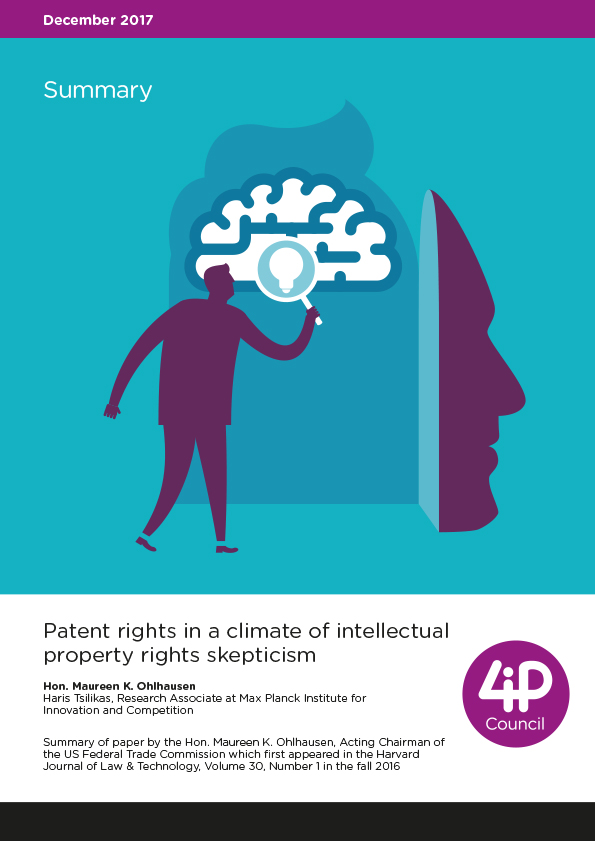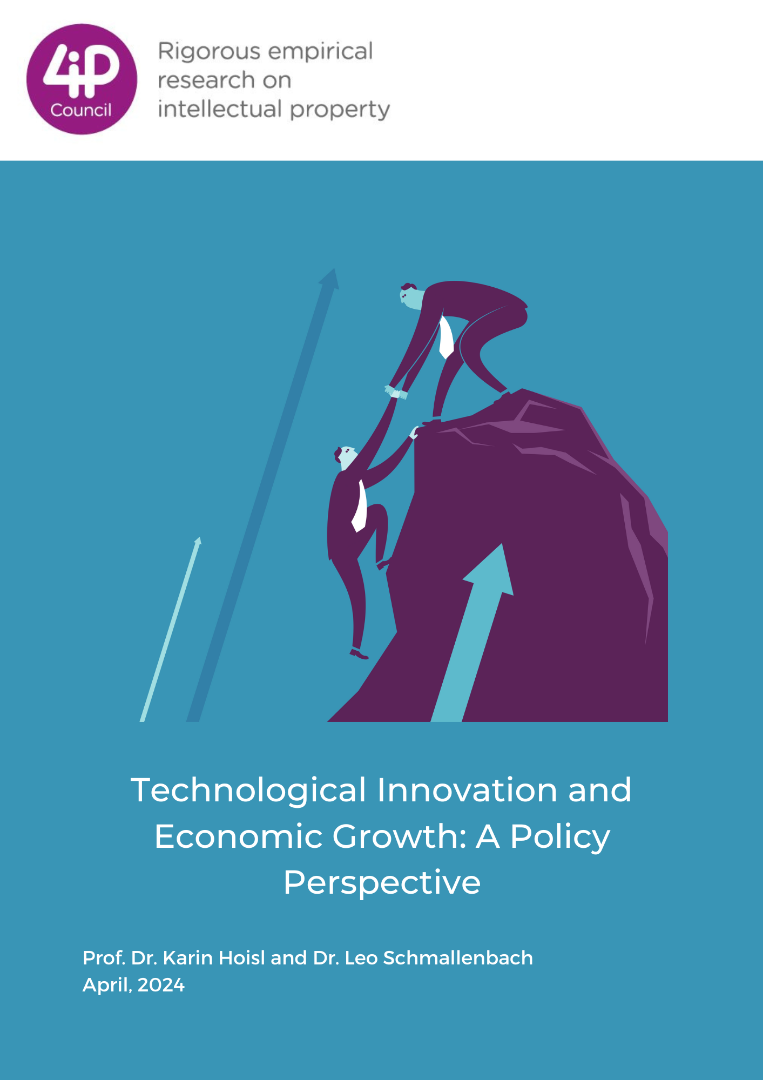Summary
PATENT RIGHTS IN A CLIMATE OF INTELLECTUAL PROPERTY
RIGHTS SKEPTICISM
Hon. Maureen K. Ohlhausen
I. Introduction
A movement is underway to dilute U.S. patents, which have recently been the object of
unprecedented criticism. U.S. policymakers lack clear guideposts for evaluating this criticism.
Further, some emerging economies are at a crossroads in deciding how to treat proprietary
technology, and they look at this U.S. debate through the prism of their own history and economic
pressures.
In order to provide a clearer policy path through this thicket, this Article explores the empirical
and theoretical literature on the relationship between patents and innovation. In crafting the most
beneficial patent policy, we should not overlook or minimize the strong theoretical and evidentiary
justifications for property rights in technology, although this does not mean that granting everstronger
patent protection will inevitably lead to ever-greater innovation. Limited patent reform
may also be appropriate to address identified problems such as insufficient quality control, the
broad scope of certain method patents, and inadequate disclosure.
This Article defends robust patent rights based on evidence about the relationship between
patents and innovation. It is true that it is not always possible to identify when patents are a but-for
cause of innovation, and the patent system has flaws and is subject to some abuse. Nevertheless,
there is ample evidence that patents serve a materially valuable role in promoting innovation in at
least some settings. Given the rich innovation in markets where claimed patent-related problems
are most prevalent, the cautious, informed and correct response is incremental, targeted
adjustment. Patents should remain a central feature of U.S. technology policy.
II. The Patent System Under Fire
The cornerstone of American innovation policy, patents allow inventors to prevent others from
copying their hard-earned creations, encourage firms to invest in commercializing technologies,
prompt technology transfer, disclose cutting-edge insights to those skilled in the art, and reflect the
U.S. tradition of honoring property rights. Why, then, are they so controversial today?
Respected economists Michele Boldrin and David Levine find “no evidence that intellectual
monopoly achieves the desired purpose of increasing innovation,” describe IP rights as an
“unnecessary evil,” and call for the patent system’s abolition.1 Economist Adam Jaffe and Harvard
Business School professor Josh Lerner call the patent system “broken.”2 Law professors Michael
Meurer and James Bessen think it “unlikely that patents today are an effective policy instrument to
encourage innovation overall.”3 As for encouraging ideas, the Economist wrote that “[t]oday’s patent systems are a rotten way of rewarding them.”4 The chorus of criticism goes on. The Hon.
Richard A. Posner sees “serious problems with our patent system.”5 A leading authority on patent
law, Mark Lemley, has proclaimed the existence of a “patent crisis.”6 A renowned economist, Carl
Shapiro, believes that the “patent system . . . provides excessive rewards to patent holders . . .
reduc[ing] economic efficiency by discouraging innovation.”7 Whether these claims are justified or
not, it is remarkable that the stalwart of U.S. innovation policy has become so controversial.
A movement is underway to dilute U.S. patents, which have recently been the object of unprecedented criticism. U.S. policymakers lack clear guideposts for evaluating this criticism. Further, some emerging economies are at a crossroads in deciding how to treat proprietary technology, and they look at this U.S. debate through the prism of their own history and economic pressures. This Article defends robust patent rights based on evidence about the relationship between patents and innovation. Given the rich innovation in markets where claimed patent-related problems are most prevalent, the cautious, informed and correct response is incremental, targeted adjustment. Patents should remain a central feature of U.S. technology policy.
The full paper written by Hon. Maureen K. Ohlhausen, Former Commissioner, US Federal Trade Commission, may be downloaded from: https://jolt.law.harvard.edu/assets/articlePDFs/v30/30HarvJLTech103.pdf







